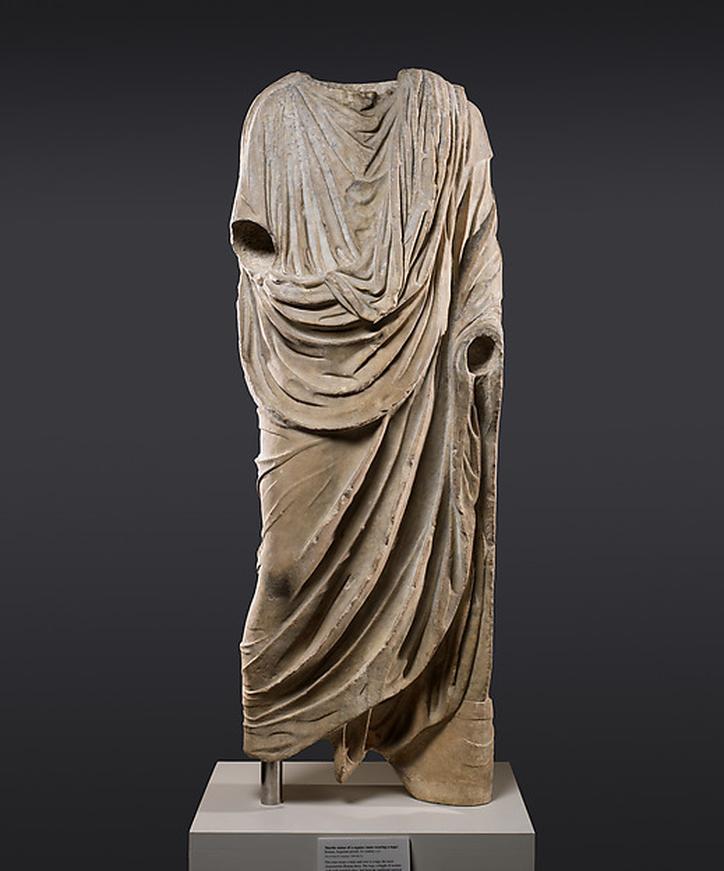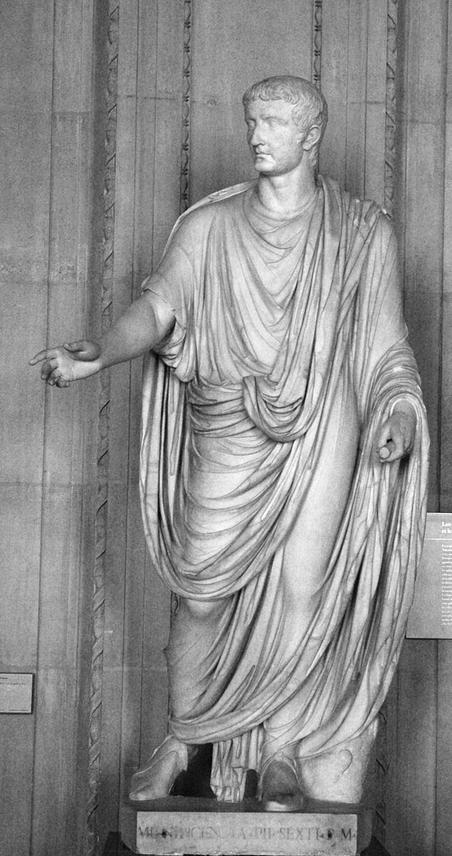The Byzantines stop wearing togas and other classical Greco-Roman garments quite early, with togas falling out of regular use well before the Byzantine period fully emerged. Togas were already rare in the Eastern Roman Empire due to their impracticality and discomfort, especially under the region’s hot climate. Instead, tunics and other comfortable garments became the norm.

The toga, a symbol of Roman identity, was cumbersome and awkward to wear, making it unsuitable for daily life, particularly in Eastern provinces. Ancient sources depict togas as a burden. For example, the poet Martial describes working in a toga as laborious and tiresome, calling it “opera togata”—a never-ending chore. Such accounts highlight the garment’s unpopularity outside formal occasions.
Outside of Rome, practical clothing like tunics dominated. Juvenal, a Roman satirist, notes many Italians refused to wear togas until death, wearing tunics even during festivals and official duties. This shift reveals a cultural move away from formal Roman dress codes. Public officials, like aediles, preferred white tunics over togas for comfort and practicality.

Within Rome itself, togas carried social weight and status, often worn to express wealth or prestige. Yet, even there, the practice was sometimes seen as pretentious or burdensome. Juvenal criticizes Romans for their “pretentious poverty,” dressing above means to uphold appearances. Meanwhile, provincial areas adopted simpler attire, reflecting different social and environmental needs.
The Byzantine Empire, shaped largely by the Eastern Roman Empire’s traditions, inherited this trend. Classical Greco-Roman garments like togas were no longer common when Byzantium rose. Instead, the Byzantines favored tunics, cloaks, and elaborately decorated robes reflecting new cultural influences, climatic suitability, and evolving status symbols.

- Togas declined in popularity due to discomfort and impracticality.
- Eastern Roman and Byzantine citizens preferred tunics and cloaks.
- Outside Rome, togas were mostly abandoned before Byzantine times.
- Clothing signaled status differently in Rome and provinces.
- Byzantine dress emphasized practicality and evolving fashion over classical Roman styles.
When Did the Byzantines Stop Wearing Togas and Other Classical Greco-Roman Garments?
The Byzantines stopped wearing togas and classical Greco-Roman garments quite early, with the toga falling out of regular use well before the Byzantine period truly took shape. This is not just a simple fashion change; it involves climate, practicality, and cultural evolution. Let’s dive into why togas vanished and what replaced them.

First off, the toga, that iconic symbol of ancient Rome, was notoriously uncomfortable. Imagine wrapping yourself in yards of heavy wool in the blazing heat of the Eastern Mediterranean — no thanks! The toga was a tangled, stuffy garment not suited for daily wear, especially beyond the city of Rome.
Martial, the Roman poet, describes “toga work” (opera togata) as tedious and painful. If wearing a toga felt like a chore to a Roman, it’s easy to see why people in warmer regions avoided it. Especially in the Eastern Roman Empire, which later became the Byzantine Empire, people shunned such impractical clothing.

The Togas: A Rare Sight Outside Rome
Outside the capital, things got even more relaxed in terms of clothing. The satirist Juvenal mocked those who stuck to the toga, pointing out that many Italians only donned it after death — that’s right, a toga for the afterlife, not daily life.

Even officials back then, like the aediles, wore simpler white tunics for their duties instead of the cumbersome toga. Outside Rome, the message was clear: more comfortable clothing rules.
Tunics, a far simpler and cooler garment, took center stage. They allowed movement and suited the Eastern climate. No surprise, therefore, that by the time the Byzantine Empire emerges in historical records, the toga was basically a forgotten relic.
Why Did Clothing Change? Culture and Comfort
In Rome, attire was a status game. Juvenal describes how Romans often wore what they couldn’t afford, borrowing fashion cues and sometimes even money from others just to keep up appearances. This “pretentious poverty” was tied to their complex social structure.
Beyond Rome, the rigid class-based clothing expectations melted away. Practicality replaced pomp. Tunics and other garments allowed freedom that togas couldn’t offer. This practical shift reflects broader cultural and economic changes in the Late Roman and early Byzantine societies.
So When Exactly Did the Shift Happen?
The toga had become rare by the 3rd and 4th centuries AD, long before Byzantium officially begins with the founding of Constantinople in 330 AD. By then, tunics, cloaks like the pallium, and other garments were well worn and widely accepted.
As the Eastern Roman Empire transitioned into the Byzantine period, the clothing style continued evolving away from the Greco-Roman classical styles. The Byzantines developed a unique fashion identity blending Roman heritage with Eastern influences. Luxurious silks, richly decorated robes, and practical layers became the new norm.
The Unique Byzantine Wardrobe
Byzantines traded the ancient toga for garments emphasizing status through intricate patterns and textiles, not complicated draping. Emperors wore the loros, a long embroidered scarf-like band of cloth wrapped around the body — utterly different from the toga, yet impressive in its own right.
Everyday people favored tunics, cloaks, and mantles crafted for comfort and style in their warm, diverse empire. Clothing turned into a tool of identity, politics, and religion rather than just social standing as in old Rome.
Lessons from Togas: Practicality Over Tradition
This story shows us something timeless: fashion changes not just for style but for comfort and necessity. The impractical toga gave way to sensible fashion that fit life’s real demands. The shift happened gradually, evolving with the empire’s shifting power, culture, and climate.
Next time you see a Roman statue clad in a toga, remember: they probably wore that only for special occasions or portraits. For everyday life, especially in Byzantium, the toga was about as popular as a woolen swimsuit.
Taking a Modern Lesson
Do you ever stick to uncomfortable fashion just because it’s “traditional” or “formal”? The Byzantines remind us: it’s okay to adapt style to what works best for you. Comfort and practicality aren’t new ideas — they’re age-old advice from history.
If ancient civilizations like Byzantium pivoted away from stuffy togas, maybe you can ditch the stiff suit or tight dress for something that lets you breathe. Fashion evolves, and sometimes the best way to honor history is by wearing clothes that suit today’s world.
Quick Recap
- Togas were rarely worn in the Eastern Roman Empire due to discomfort and impracticality.
- By the 3rd and 4th centuries AD, togas had mostly disappeared outside Rome, replaced by tunics.
- Juvenal’s satire shows many Italians avoided togas except for funerals and rituals.
- Social and cultural attitudes favored practicality over Roman tradition beyond Rome.
- Byzantine clothing moved toward elaborate, comfortable robes reflecting a unique, evolving identity.
No toga, no problem. The Byzantines clearly prove that when it comes to clothes, history is as much about pragmatism as it is about style.




